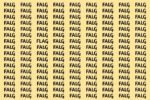Have you ever tried to find the word “Cat” hidden among a bunch of “Cot”s in a list or a grid? Surprisingly, many people find this much harder than it sounds. On the surface, the difference between “Cat” and “Cot” is just a single letter a vowel swap from “a” to “o.” Yet, when given only a few seconds to spot “Cat,” most people struggle or fail to do so. This small visual and cognitive puzzle exposes interesting quirks about how our brains process written language and perceive subtle differences.
The Role of Visual Similarity
One of the biggest reasons people struggle to spot “Cat” among “Cot”s is the overwhelming visual similarity. The words share two out of three letters, “C” and “T,” which frame the word. Our brains often rely on quick visual shortcuts to recognize words, especially in tasks where time is limited. When the only difference is a middle vowel, these shortcuts don’t help as much.
When you glance quickly, your brain tends to chunk familiar patterns. In this case, “C_T” becomes a single unit in your mind, and the middle letter becomes less distinct. The eye might scan across many “Cot”s and assume they are all the same word pattern without registering the small vowel change. This makes the “Cat” easily overlooked, especially if you’re rushing or under pressure.
The Influence of Cognitive Load and Time Pressure
When you have only 6 seconds to find “Cat” among “Cot”s, the brain’s limited processing time forces it to prioritize speed over accuracy. Under time pressure, the brain leans on heuristics mental shortcuts to make quick decisions. This means instead of carefully analyzing each word letter by letter, it relies on pattern recognition.
However, this shortcut works best when differences are large or obvious. In the case of “Cat” vs. “Cot,” the difference is subtle and easily missed. The cognitive load of scanning many words quickly makes it harder to spot this subtle difference because the brain can’t allocate enough attention to every word. As a result, many people simply skim over the correct word without consciously noticing it.
Language Processing and Phonetic Similarities
Another factor at play is how we process language and sounds. “Cat” and “Cot” sound very similar, especially in many English accents. When reading quickly, people often subvocalize or mentally “hear” the word. Because these two words sound nearly identical, the brain doesn’t flag “Cat” as a distinct target from “Cot.”
This phonetic overlap means the brain treats both words as nearly the same linguistic unit. Without consciously realizing it, the similarity in sound decreases the chance of spotting “Cat” as an outlier in a sea of “Cot”s. The subtle vowel sound difference is simply not enough to make the word stand out under time constraints.
The Impact of Familiarity and Expectations
Our expectations also shape what we notice. When confronted with a list filled mostly with “Cot”s, the brain quickly settles into expecting to see “Cot.” This expectation forms a mental template that influences perception. The “Cat,” as a deviation, can be missed because it doesn’t fit the brain’s predicted pattern.
Familiarity with the words also plays a role. While “Cat” is a very common word, when surrounded by many “Cot”s, the brain treats the entire group as one uniform set rather than individual words. This mental grouping reduces attention to detail and increases the chance of overlooking the “Cat.”
How Eye Movement and Attention Affect Detection
The way our eyes move across text also explains why spotting “Cat” is challenging. When scanning text quickly, our eyes make rapid jumps called saccades. Between these jumps, brief fixations occur where the brain processes information. The time spent fixating on each word is very short, especially when the task demands speed.
If the eyes don’t land precisely on the “Cat” or if the fixation time is too brief, the brain doesn’t get enough information to distinguish it from “Cot.” Instead, it fills in the gap with what it expects, usually “Cot.” This phenomenon, called “word masking” or “crowding,” can obscure subtle differences in visually similar words during quick scanning.
The Psychological Principle of Change Blindness
This difficulty is related to a psychological phenomenon called change blindness, where people fail to notice changes in a visual scene when those changes happen during a disruption, like a brief glance or distraction. In this case, the difference between “Cat” and “Cot” is a subtle “change” that the brain fails to detect in the brief glance time.
Change blindness shows how selective human attention is. We don’t process every detail in our environment; instead, we focus on what seems important or expected. When “Cat” is unexpected in a field of “Cot”s, our brains often miss it because it doesn’t seem significant enough to draw attention quickly.
Practical Implications Beyond Word Puzzles
While this example seems like a simple word puzzle, it highlights broader cognitive and perceptual principles relevant in everyday life. For instance, in tasks like proofreading, reading quickly, or scanning text for errors, similar challenges arise. Subtle mistakes or differences can be missed due to visual similarity, time pressure, and expectation bias.
Understanding this can improve strategies for reading and reviewing text. Slowing down, consciously attending to details, and breaking the expectation pattern can help overcome the natural tendency to overlook subtle differences. This is important not just for word spotting but for any situation requiring careful visual discrimination.
Conclusion: Why the Struggle Makes Sense
Most people struggle to spot “Cat” among “Cot” in just 6 seconds because the brain relies on fast, efficient shortcuts that prioritize speed and familiar patterns over fine detail. The visual similarity, phonetic closeness, time pressure, and cognitive expectations all combine to make this task surprisingly tricky.
This small puzzle is a window into how human perception and cognition work how we see and interpret the world through the lens of prior knowledge, expectation, and mental economy. Next time you try a quick word search or similar task, remember that missing small details is normal and reflects deep truths about human attention and brain function.




